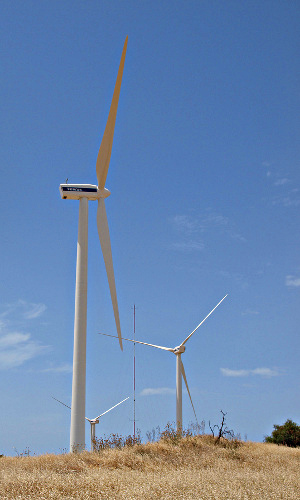Working in the office on Omonia Avenue in Limassol, I couldn’t have not noticed the wind turbines. They were transported in pieces by huge trucks from the new port to somewhere. Some people went adventurous and actually located the wind farm near Pafos.
But until today I haven’t heard any news coverage of the wind farm. Today, however, Cyprus Mail runs the story.
The first of the planned 41 turbines at Orites wind farm was turned on for about an hour on Wednesday and produced the first independent renewable energy for Cyprus using the wind. The electricity was then fed onto the main power grid.
These are excellent news!
The 41 wind turbines of the farm – the first of its kind in Cyprus and the largest in the region – will soon be providing the island with 83MW of renewable energy. Orites is regarded as a big project for the wider Eastern Mediterranean region, as in Greece and Spain 20 to 30 MW production is regarded as a huge amount. At its peak, the total power consumed island-wide is between 1,000 and 1,200MW.
And of course there was no way that these excellent news wouldn’t be shadowed by something and someone. It turns out, none of the officials have much interest in what is going on with the energy on the island.
Wednesday’s event was not attended by any officials despite invitations being sent out. “Despite sending out numerous invitations none of the Ministers, MPs or officials came. I can’t believe they weren’t even curious to see what was happening,”
This is sad. Obviously it is an important moment and many people worked really hard to make it happen. It would be nice if some interest was shown from the government. Hopefully the president will attend the official opening of the farm in September or October.


